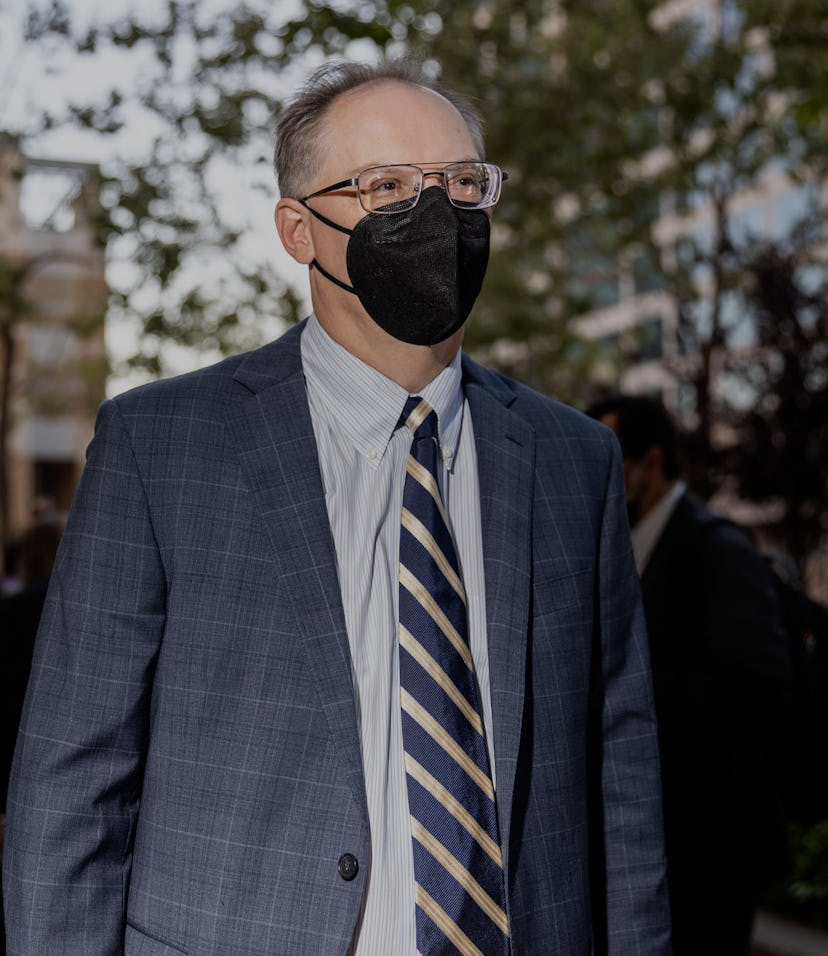Epic v. Apple
Epic v. Apple highlights how bad the courts are with technology
Between 'Fortnite' teens hijacking the public feed and general audio problems, the high-profile case has had technical problems from the start.

On Monday morning at approximately 11 a.m. ET, I dialed into the public listening line for the first day of court proceedings in the ongoing battle between Apple and Fortnite developer Epic Games. A robotic voice told me that I could unmute myself with a simple key press combo.
I expected silence or, at most, some administrators completing pre-hearing tech testing. Instead, I was greeted with a clamor of voices — many of them belonging to younger people, by the sound of it — talking over one another. Screams of “Free Fortnite!” became a consistent theme in this chaos.
The din continued for about 10 minutes before someone at the court diagnosed the issue and silenced the line. Then a voice called out that everyone should follow them on YouTube. “Can anyone hear me?” they asked, and again the chaos ramped up.
Consequently, because the court couldn’t figure out how to operate its teleconference system, the first day of this high-profile hearing ended up starting more than half an hour late. We are now more than a year into the COVID-19 pandemic — nearing 14 months of remote activities — and the court still hasn’t figured out how to conduct a teleconference.
And it only got worse — As alarming as this pre-trial stream was, it really could’ve been much more dire. At worst, listeners were subject to loud Fortnite players gabbing about the case with minimal expletives. But imagine if someone with a more hateful agenda decided to take over the stream.
But the tech issues only became more pressing as the trial itself began. The lawyers’ well-crafted opening statements were somewhat muffled by the stream — certainly not unlistenable but of low enough quality that it was difficult to listen to for hours on end. At one point the judge interrupted Apple’s counsel mid-sentence to attempt a quick tech fix. The lawyer soon resumed her opening statement, sounding exactly the same.
The court’s tech issues became exceedingly clear as Epic CEO Tim Sweeney was welcomed to the stand. Sweeney’s audio stream made it sound as if he’d popped the microphone under his tongue rather than on his lapel. At least half of his sentiments were washed away by the wah-wah of interference.
What gives? — Epic’s case against Apple has the potential to set important precedents for how companies are allowed to operate software stores. It’s high-profile enough that the court set up a public call-in line so the world could follow along — and then it failed to make that stream usable.
Teleconference solutions are not new. We’re using them more now than ever, yes — but we’re not just now learning how to use them.
And yet this is not the first time a court hearing has been plagued by tech issues. It’s not even the first Big Tech trial to find itself mired in connectivity problems. In the FTC’s ongoing antitrust hearings, for example, courts have shown a stunning inability to wrangle remote witnesses into virtual spaces. At the first such hearing, Jeff Bezos — leader of one of the biggest of Big Tech companies — did not appear on-screen at first because of tech issues.
At least in previous mostly remote cases, we’ve been able to follow along; in Epic v. Apple these quirks become genuine impediments to legal proceedings. It’s clear at this point that the courts need to put more resources — financial backing and more comprehensive training — or they’ll doomed to be stuck in the past forever.